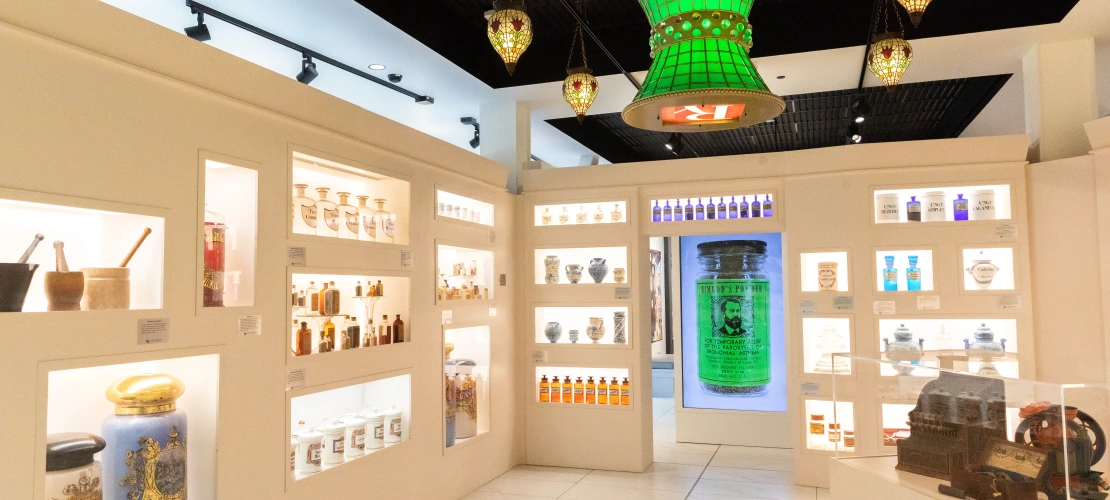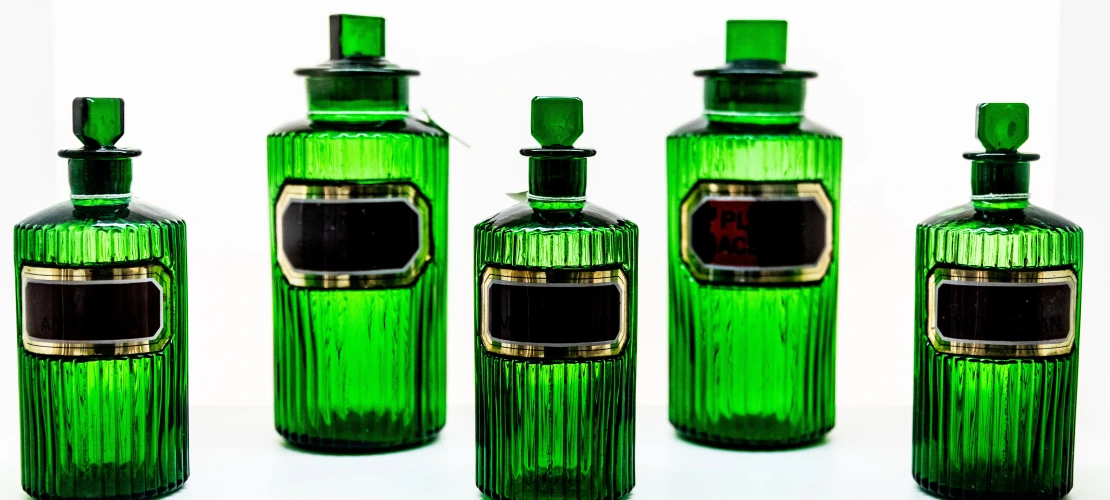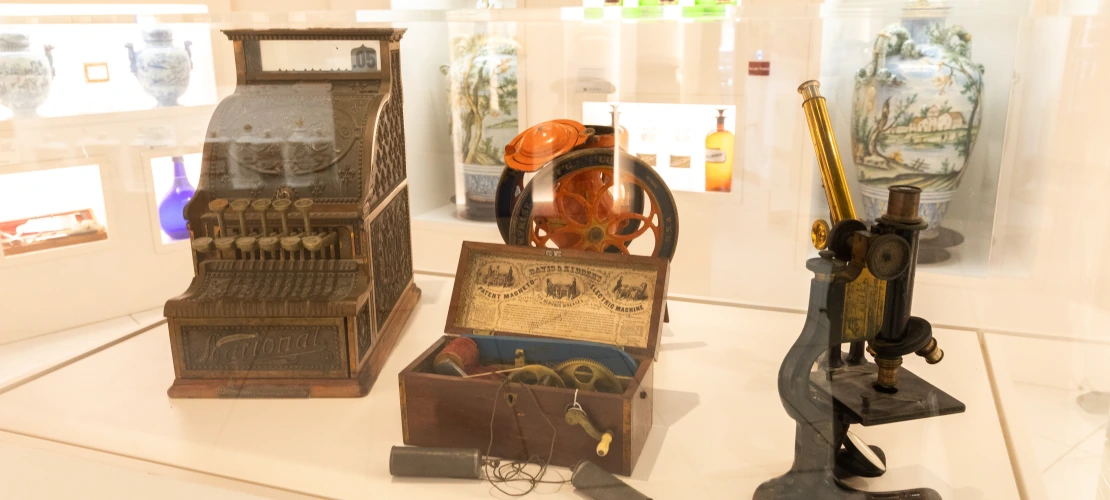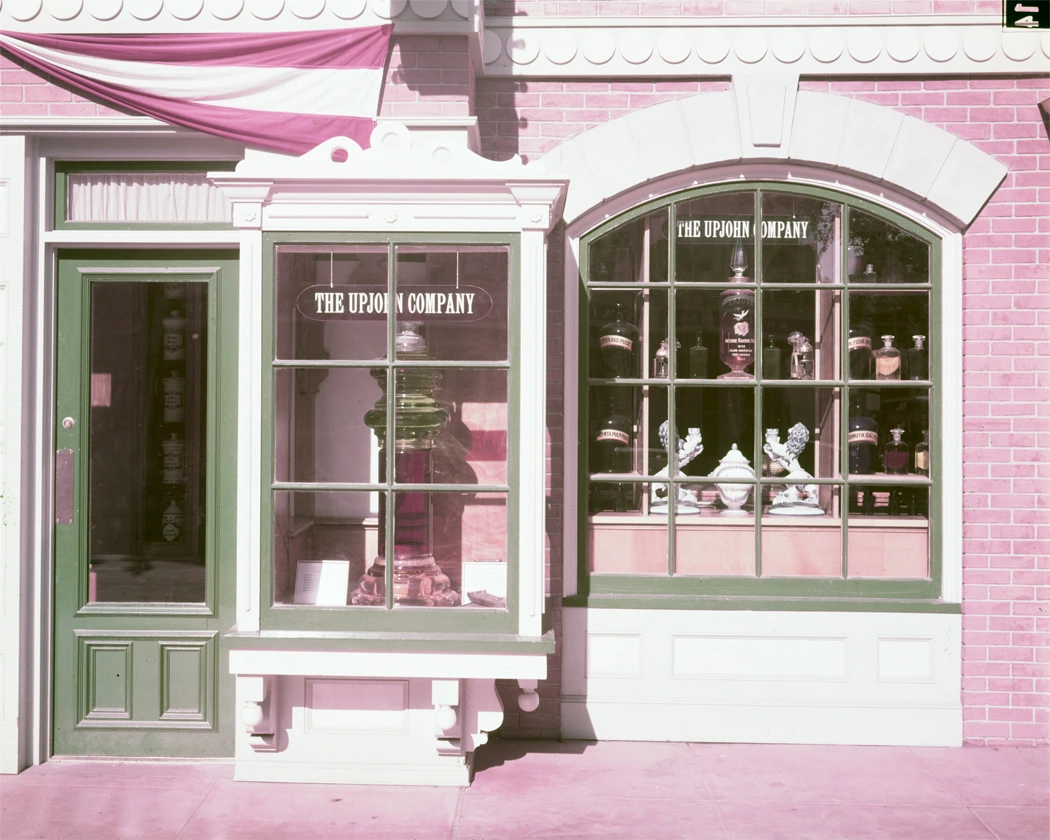The Disneyland Upjohn Pharmacy Collection
The most prestigious of the museum’s holdings, the Upjohn Pharmacy collection comes from Disneyland. Located on Main Street U.S.A. from 1955, when the park opened, until 1970, the Upjohn Pharmacy spoke to the changing landscape of the pharmacy profession.
Sponsored by The Upjohn Company, a major drug manufacturer from Kalamazoo, Michigan, the Upjohn Pharmacy was something new and something ancient. It consisted of two exhibit spaces. The larger was a replica of an apothecary from the 1890–1910 period (the timeframe Main Street was meant to recreate), and the smaller was a technology-driven space that showcased The Upjohn Company as it existed in the mid-century. Upjohn was founded in 1886, so the Upjohn Pharmacy provided the perfect platform for the company to tell its own “then and now” story.
The Upjohn Pharmacy grew out a friendship between Walt Disney and Donald Gilmore, Upjohn’s managing director. The two men both had winter homes at the Smoke Tree Ranch in Palm Springs, California. As Walt Disney was planning Disneyland, he sought numerous corporate sponsorships as a way to help him offset the cost (other sponsors included Carnation, Swift, PepsiCo, Santa Fe Railroad, and Richfield Oil). Having grown up in a small midwest town, Walt Disney knew that the center of many American towns was the local drugstore. Thus, the Upjohn Pharmacy was a natural inclusion in Disneyland.
In the months leading up to the park’s opening, Upjohn purchased hundreds of fabulous pharmaceutical antiques to display in its pharmacy. All of them were authentic, many international in origin, and some dating back several centuries.
The Upjohn Pharmacy had a staff of two pharmacists and two clerks. Visitors to the store would receive Upjohn Pharmacy postcards and bottles of Unicap vitamins that were branded for Disneyland. The pharmacy even hosted traveling scientific exhibits!
In 1970, the Upjohn Pharmacy closed. Much of its antique collection was given to the California Museum of Science and Industry (now the California Science Center), where it was kept for almost 40 years. Then, in 2007, the collection was given to the History of Pharmacy Museum. Today, it is the centerpiece of the museum.


















